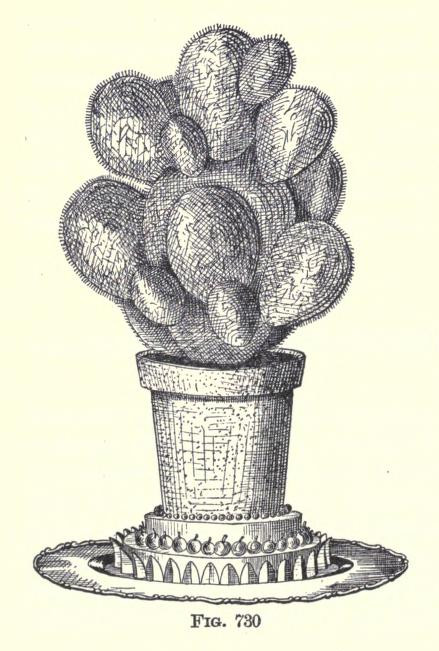Pièces montées

Illustration of a pièce montée representing a cactus, taken from Charles Ranhofer's 1894 book, The Epicurean. It was to be made of various types of nougat, including pistachio nougat to form the cactus itself.
|
|
| Type | Decorative confectionery |
|---|---|
| Place of origin | France |
| Main ingredients | Nougat, marzipan, spun sugar |
| |
|
A pièce montée (pronounced [pjɛs mɔ̃te]; from French, literally "assembled piece" or "mounted piece", plural pièces montées) is a kind of decorative confectionery centerpiece in an architectural or sculptural form used for formal banquets and made of such ingredients as confectioner’s paste, nougat, marzipan, and spun sugar. Although the ingredients are typically edible, their purpose is purely decorative, and they are often not really meant to be consumed. They are associated with classical French chefs, such as Carême. Carême had studied architecture and is credited with saying, referring to pièces montées, that architecture was the most noble of the arts and that pastry was the highest form of architecture.
The term pièce montée is sometimes used to refer to the dessert also known as croquembouche, an assemblage of cream puffs (or occasionally other kinds of candy or pastry) stuck together with caramel or spun sugar into a tall, usually conical shape. Unlike the type of pièce montée described above, it is meant to be eaten. It is traditionally served at parties celebrating weddings and baptisms in France.
In The Great British Bake Off, the confectionery centrepiece was used as the final show stop in series five of the programme.
...
Wikipedia
